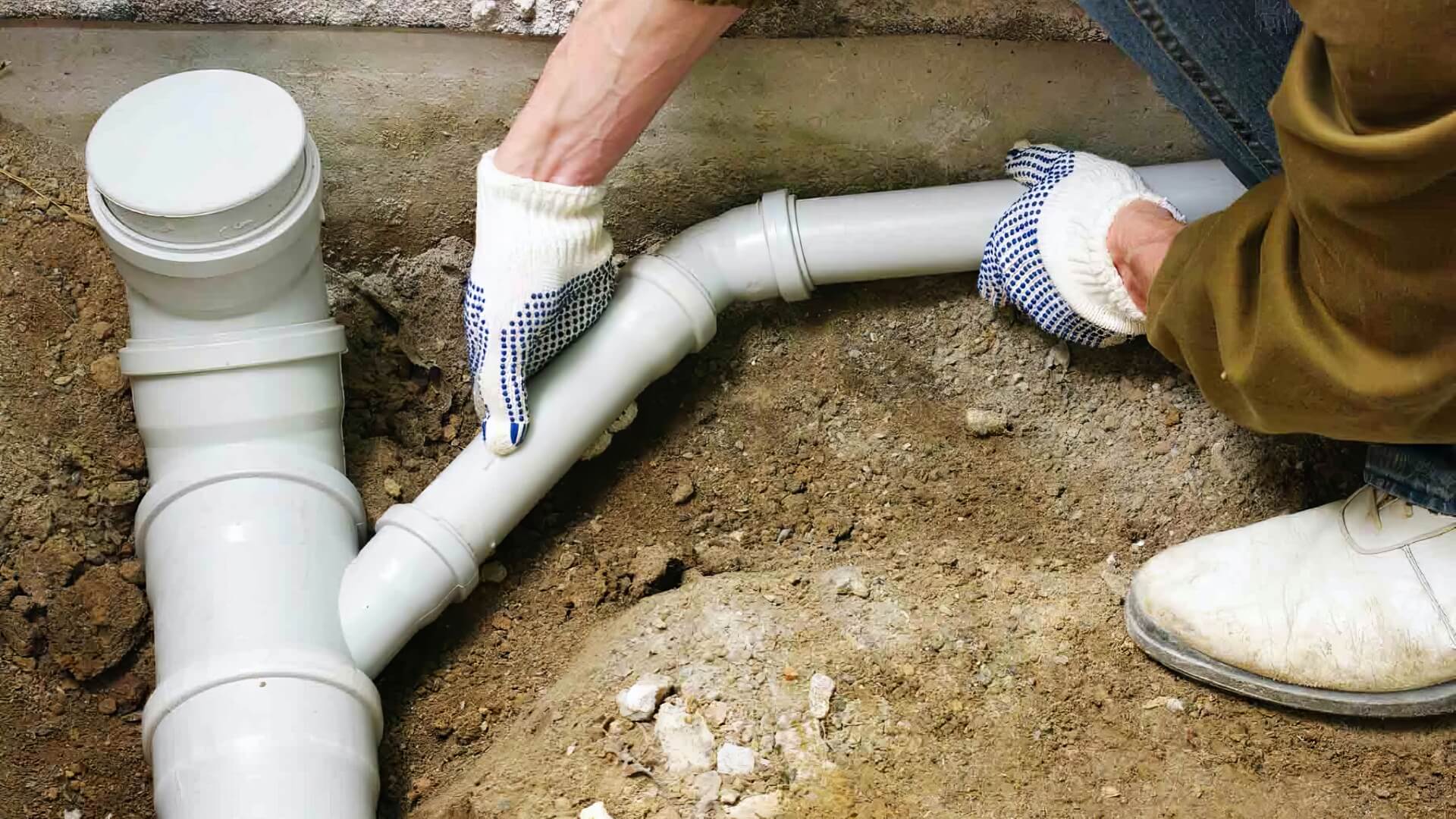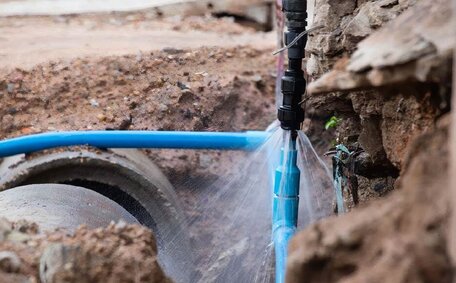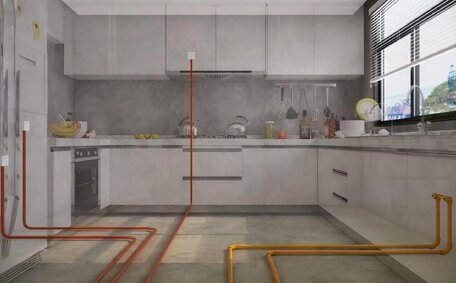Introduction to Pipe Repairs: Patching vs Relining
For repairing damaged pipes, two methods stand out as preferred by plumbers and homeowners: pipe patching and pipe relining.
Both methods provide non-destructive alternatives to traditional pipe replacement, effectively restoring pipe integrity without the need for full excavation. Understanding the key differences between patching and relining is crucial when determining the most suitable repair approach.
Pipe relining, on the other hand, involves installing a resin-impregnated liner along the entire length of the affected pipe.
Here in Hurstville and across the Sydney plumbing industry, the choice between applying a patch or undergoing complete relining depends on multiple factors.
What is Pipe Patching?
Pipe patching is a plumbing repair method that targets specific areas of pipe damage, rather than addressing an entire pipeline system. It involves applying a protective seal or 'patch’ over the damaged section of pipe using a fast-curing resin solution.
As a localised repair strategy, pipe patching has the key benefit of being quick - usually taking less than an hour from start to finish. The patch creates a waterproof barrier preventing further leakage and erosion of the damaged pipe walls. It can be an ideal solution for stabilising smaller areas of damage caused by corrosion, cracks, displacements or punctures.
However, pipe patches are a temporary fix and don’t address broader systemic issues within the pipes.
What is Pipe Relining?
Pipe relining is a trenchless technology that internally renews damaged pipelines, circumventing traditional repair methods. It involves inserting a flexible resin-saturated liner into the damaged pipe and curing it in place to form a smooth, seamless 'pipe within a pipe’.
Once cured, the relined pipe is effectively renewed, offering restored structural integrity and improved flow capacity. Pipe relining can resolve issues caused by tree roots, cracks, fractures, misalignments or general wear and tear. It is suitable for a wide range of pipe materials like clay, concrete, iron and PVC.
A key benefit of pipe relining over traditional methods is its minimal destruction. Access pits are only required at pipeline endpoints, avoiding the need to dig trenches along the entire pipe length. Relining also provides superior longevity compared to patching - with epoxy liners being warrantied for up to 50 years.
The process causes no disruption to surrounding infrastructure - making it ideal for sensitive sites. In addition, the smooth epoxy finish improves flow efficiency and resistance to future blockages and build-up. While specialist equipment and expertise are required, a full pipe relining typically takes just one to two days.
How Do Pipe Patching and Relining Compare?
When determining the best repair strategy, understanding how pipe patching and relining compare is key. The main differences come down to:
- Scope and Durability: Patches repair specific damage areas, whereas relining refurbishes entire sections, dealing with systemic issues. Patches offer swift restoration, but liners provide unmatched longevity, with lifespans extending up to 50 years.
- Process Disruption: Patching causes minor disruption, taking under an hour. Relining requires endpoint access but avoids trenches. Both methods preserve surrounding structures.
- Suitability: Patching works for minor cracks, leaks and displacements. It’s a temporary fix. Relining handles extensive root, fracture and wear damage. It’s a whole-of-pipe solution.
- Cost: Patching is cheaper upfront for small repairs. However relining provides better value long-term. Professionals can advise the most cost-effective approach.
So in summary - pipe patching offers a fast, affordable patch-up for minor damage, while relining provides comprehensive structural renewal. Proper examination of your drain by specialists like Hurstville Plumbing is recommended to ascertain which technique is best suited to get the job done.
Cost Comparison
When weighing up pipe repair options, cost often plays a pivotal role in decision making. Generally speaking, pipe patching tends to be the more affordable initial outlay.
Pipe patching prices start from around $150 on average.
Pipe relining, however, demands comprehensive materials and careful installation. Residential relining averages at $3000+, while large commercial projects may exceed $10,000.
Epoxy resin, felt tubing, specialist equipment and multi-trade expertise all contribute to higher base costs.
It’s worth noting however that patch repairs only provide a temporary solution. Conversely, a single relining job offers a durable solution that can last over 50 years. This makes it extremely cost-effective from a whole-of-life value perspective.
Further degradation of the underlying pipe will necessitate recurring patches or eventual full replacement – incurring cumulative long-term expenses.
By avoiding destructive excavation methods, relining yields substantial indirect savings in building repair/reinstatement costs. It also minimises property access disruption for occupants. Factoring in these wider cost savings and the extended lifespan, pipe relining ultimately provides excellent fiscal value across time.
Effectiveness and Durability
When evaluating effectiveness and durability, pipe relining again proves superior to basic patching in the long run. While patches can quickly resolve acute issues like cracks and leaks, they fail to address wider deterioration across entire pipe sections.
Over time, untreated systemic degradation inevitably worsens, resulting in recurring failures and necessary re-patches. Moreover, frequent patching can compromise the structural integrity of the pipes. So patchwork represents an incomplete, temporary band-aid solution rather than a lasting renewal.
In contrast, pipe relining forms an enduring internal barrier that comprehensively restores pipes to like-new condition.
One-off relining avoids the need for repetitive repairs down the track. Comprehensive relining also lessens the risk of catastrophic pipe failures that could damage the nearby environment. So while marginally more expensive initially, pipe relining delivers more holistic value and effective long-term pipe reinstatement.
When to Choose Patching or Relining
Deciding between pipe patching and full relining depends largely on the extent and type of damage involved. As a quick but temporary fix, patching is ideal for minor issues like cracks, leaks and small punctures. It can rapidly stabilise damage and restore function.
Relining is optimal for extensive damage from tree root invasion, fractures, misalignments or general wear, providing more robust repairs. By renewing entire pipe sections it resolves damage wholesale, rather than just patching over symptoms.
Patching is appropriate for straightforward scenarios where excavation and relining are unwarranted or financially unfeasible. Still, the longevity of patches is limited. They fail to arrest wider decline - needing replacement once surrounding areas further deteriorate.
So while pipe patching serves well for localised damage, pipe relining better handles comprehensive repairs. A thorough site examination by drainage specialists at Hurstville Plumbing will determine which technique is best suited to efficiently get the job done.
Assessing Pipe Damage
Accurately assessing pipe damage is crucial when determining the most suitable repair approach. At Hurstville Plumbing, we utilise CCTV drain cameras to inspect the full extent of degradation throughout drainage systems.
This advanced technology provides precision in detecting affected areas and tailoring solutions. It allows our specialists to advise whether localised patching or whole-of-line relining is required to comprehensively resolve issues.
Utilising CCTV cameras, we precisely capture pipeline issues such as cracks, breaks, root intrusion and blockages. Thorough inspections identify damage types, quantities and locations - establishing precise repair requirements.
Equipped with CCTV insights, our team advises if patching suffices or if comprehensive relining is imperative for lasting repair solutions. We can also determine equipment needs, resin volumes and timeframes to streamline project preparation.
CCTV drainage camera inspection is crucial in making the right diagnosis to then develop repair solutions tailored to permanently resolve pipe problems.
Considering Your Repair Timeframe
When choosing between patching and relining, repair timeframes should factor heavily in decision making. Project durations differ based on pipe length, access aspects and process intricacy.
Pipe patching typically takes less than an hour, with quick resin application and curing times. Small, superficial damage is quickly sealed. However issues like difficult pipe access can hamper and prolong patching.
Comparatively, end-to-end pipe relining demands greater time investment. This full process spans 1-2 days.
After thorough site/pipe inspection, access chambers are installed, pipes cleaned and resin-saturated liners inserted. Following proper resin curing and cooling, final reinstatement of workplace surfaces occurs.
For long sewer lines or vast pipe networks, relining timeframes extend further. Similarly, complications like broken pipes, awkward angles or diameter fluctuations can impede liner insertion - inflating schedules. Such issues are assessed via CCTV review to streamline project programming.
In essence, pipe patching offers quick, minimal-impact repairs, while relining ensures thorough renewals for lasting restoration. Professional drainage examinations determine the best approach aligned with repair time expectations.
The Long-Term Outlook
In terms of long-term effectiveness, the durability of pipe relining outperforms basic patching. While patches rapidly mend acute issues, underlying systemic decay continues unchecked - soon necessitating recurrent fixes.
Eventually full-scale replacement is needed - an extremely disruptive, costly undertaking. Conversely, one-off epoxy relining comprehensively reinstates pipes to enduringly withstand decades of use.
The seamless liners meld with existing pipes, offering water-tight integrity independently of external sealants. Thermal expansion qualities also give liners lifelong dimensional stability across fluctuating temperatures. Such robust materials and holistic repairs ensure exceptional longevity.
Smooth polymer facings improve flow, resist corrosion and curb sediment build-up - enhancing functionality. With companies like Hurstville Plumbing providing up to 50-year guarantees on relining projects, this method delivers proven long-term security and value.
CCTV examinations help identify the most fitting fix for lasting outcomes.
Professional Evaluation for the Best Solution
When it comes to resolving pipe damage, professional evaluation is key for determining the optimal long-term solution. At Hurstville Plumbing, our qualified specialists utilise high-tech CCTV drainage cameras to thoroughly inspect pipe systems and accurately diagnose issues.
Armed with precise pipe condition data, we can then best advise whether basic patching or whole-of-line relining is required to comprehensively fix problems - aligning solutions with repair timeframes and budgets. Our expertise ensures tailored recommendations that provide enduring value.
For expert assessment and advice to ensure precise pipe repairs, from minor leaks to more complex issues, contact us today.
Leveraging over five decades of expertise, Hurstville Plumbing provides insightful advice for your drainage repair decisions. Contact us at 1300 349 338 or via jobs@hurstvilleplumbingservices.com.au for an appointment with our specialists.






